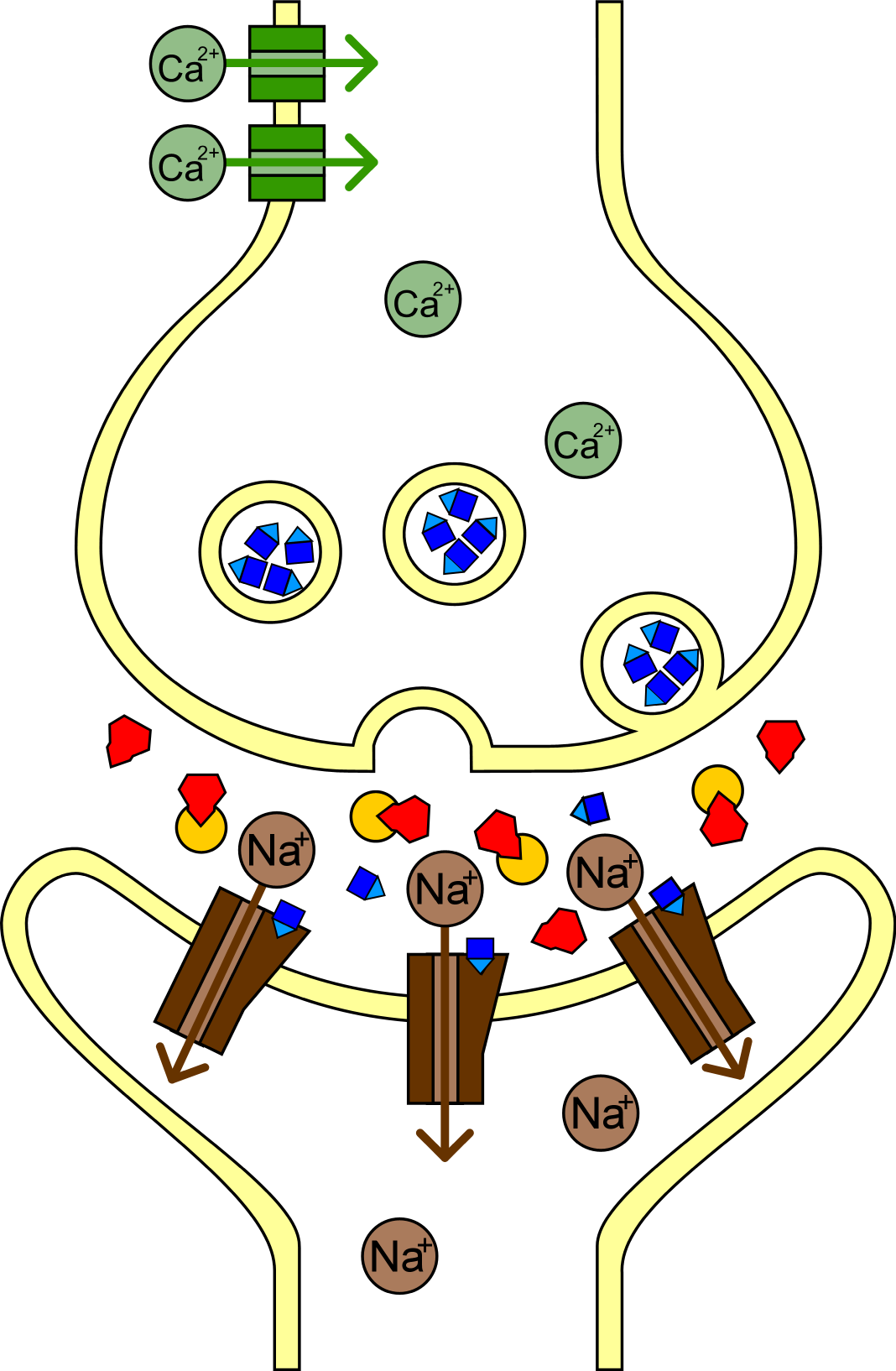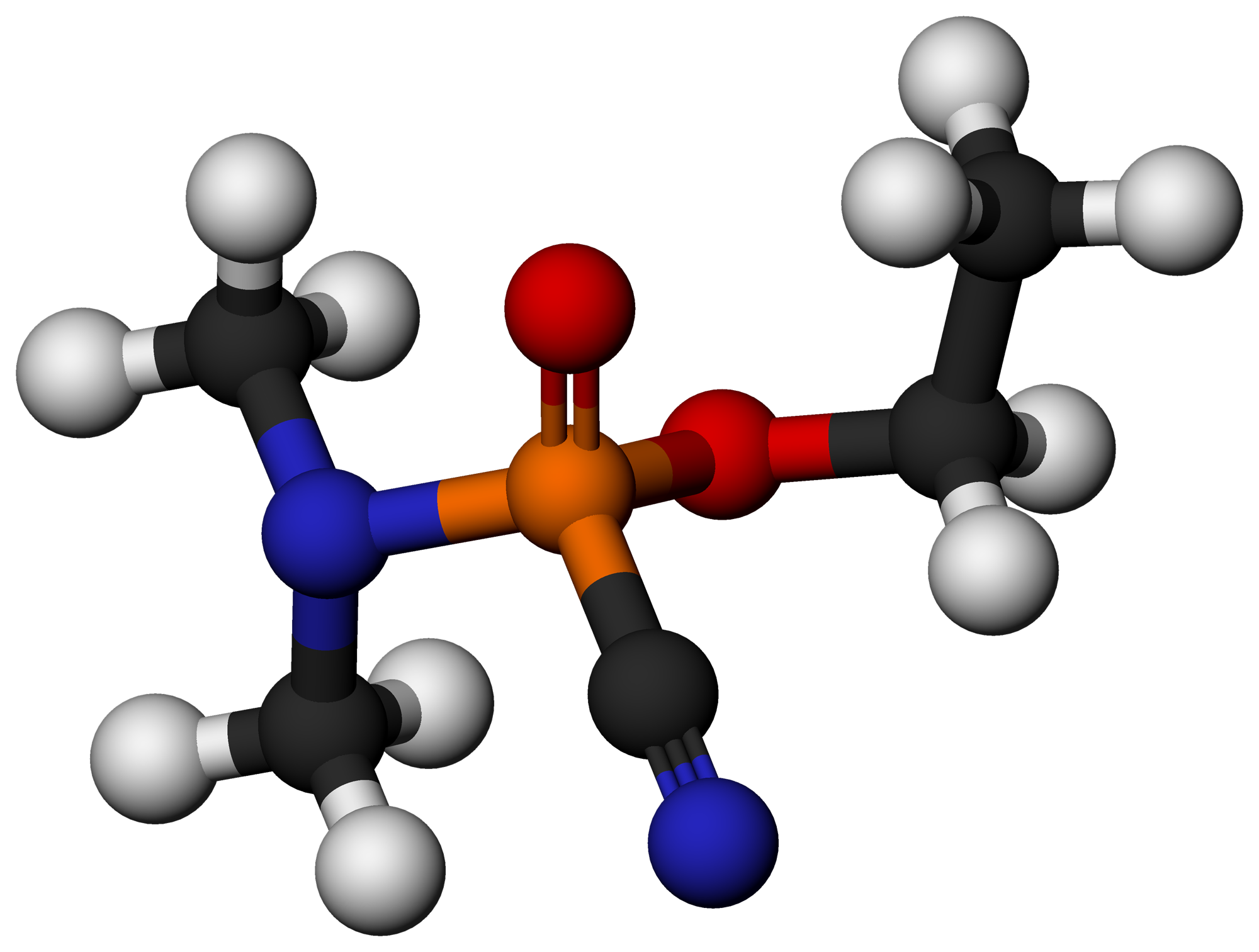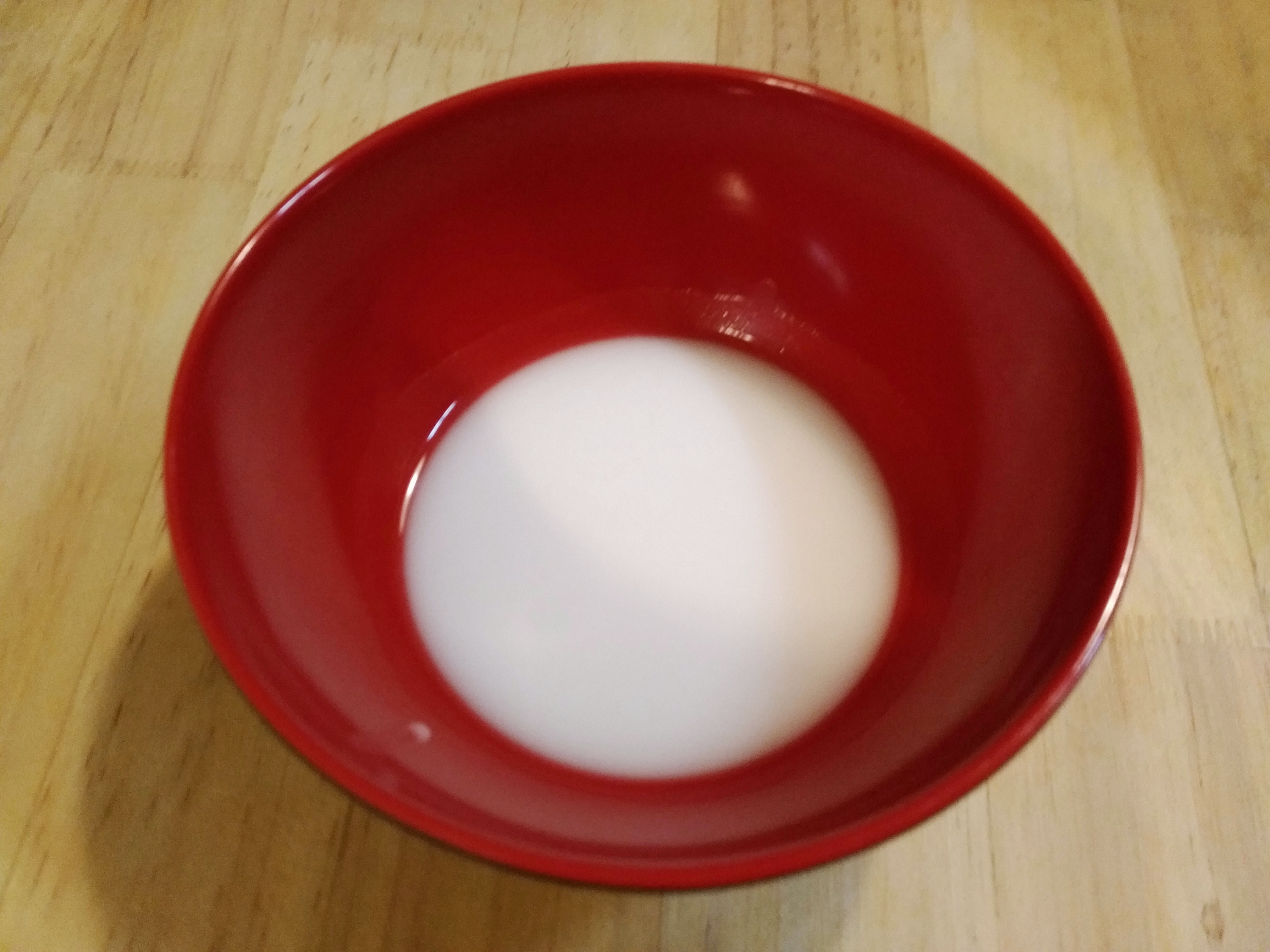|
Soman
Soman (or GD, EA 1210, Zoman, PFMP, A-255, systematic name: ''O''-pinacolyl methylphosphonofluoridate) is an extremely toxic chemical substance. It is a nerve agent, interfering with normal functioning of the mammalian nervous system by inhibiting the enzyme cholinesterase. It is an inhibitor of both acetylcholinesterase and butyrylcholinesterase. As a chemical weapon, it is classified as a weapon of mass destruction by the United Nations according to UN Resolution 687. Its production is strictly controlled, and stockpiling is outlawed by the Chemical Weapons Convention of 1993 where it is classified as a Schedule 1 substance. Soman was the third of the so-called ''G-series'' nerve agents to be discovered along with GA (tabun), GB (sarin), and GF (cyclosarin). When pure, soman is a volatile, corrosive, and colorless liquid with a faint odor like that of mothballs or rotten fruit. More commonly, it is a yellow to brown color and has a strong odor described as similar to c ... [...More Info...] [...Related Items...] OR: [Wikipedia] [Google] [Baidu] |
Cyclosarin
Cyclosarin or GF (cyclohexyl methylphosphonofluoridate) is an extremely toxic substance used as a chemical weapon. It is a member of the '' G-series'' family of nerve agents, a group of chemical weapons discovered and synthesized by a German team led by Gerhard Schrader. The major nerve gases are the G agents, sarin (GB), soman (GD), tabun (GA), and the V agents such as VX. The original agent, tabun, was discovered in Germany in 1936 in the process of work on organophosphorus insecticides. Next came sarin, soman and finally, cyclosarin, a product of commercial insecticide laboratories prior to World War II. As a chemical weapon, it is classified as a weapon of mass destruction by the United Nations. Pursuant to UN Resolution 687 its production and stockpiling was outlawed globally by the Chemical Weapons Convention (CWC) of 1993, although Egypt, Israel, North Korea and South Sudan have not ratified the CWC (thus not outlawing their own stockpiling of chemical weapons). Ch ... [...More Info...] [...Related Items...] OR: [Wikipedia] [Google] [Baidu] |
Methylphosphonyl Difluoride
Methylphosphonyl difluoride (DF), also known as EA-1251 or difluoro, is a chemical weapon precursor. Its chemical formula is CH3POF2. It is a Schedule 1 substance under the Chemical Weapons Convention. It is used for production of sarin and soman as a component of binary chemical weapons; an example is the M687 artillery shell, where it is used together with a mixture of isopropyl alcohol and isopropyl amine, producing sarin. Preparation Methylphosphonyl difluoride can be prepared by reacting methylphosphonyl dichloride with hydrogen fluoride (HF) or sodium fluoride Sodium fluoride (NaF) is an inorganic compound with the formula . It is a colorless or white solid that is readily soluble in water. It is used in trace amounts in the fluoridation of drinking water to prevent tooth decay, and in toothpastes ... (NaF). Safety Methylphosphonyl difluoride is both reactive and corrosive. It is absorbed through skin and causes burns and mild nerve agent symptoms. It reacts ... [...More Info...] [...Related Items...] OR: [Wikipedia] [Google] [Baidu] |
Insecticide
Insecticides are pesticides used to kill insects. They include ovicides and larvicides used against insect eggs and larvae, respectively. The major use of insecticides is in agriculture, but they are also used in home and garden settings, industrial buildings, for vector control, and control of insect parasites of animals and humans. Acaricides, which kill mites and ticks, are not strictly insecticides, but are usually classified together with insecticides. Some insecticides (including common bug sprays) are effective against other non-insect arthropods as well, such as scorpions, spiders, etc. Insecticides are distinct from insect repellents, which repel but do not kill. Sales In 2016 insecticides were estimated to account for 18% of worldwide pesticide sales. Worldwide sales of insecticides in 2018 were estimated as $ 18.4 billion, of which 25% were neonicotinoids, 17% were pyrethroids, 13% were diamides, and the rest were many other classes which sold for less th ... [...More Info...] [...Related Items...] OR: [Wikipedia] [Google] [Baidu] |
Sarin
Sarin (NATO designation GB nerve_agent#G-series.html" ;"title="hort for nerve agent#G-series">G-series, "B" is an extremely toxic organophosphorus compound.Sarin (GB) Emergency Response Safety and Health Database. National Institute for Occupational Safety and Health. Accessed April 20, 2009. that has been often used as a due to its extreme potency as a . Sarin is a volatile, colorless and odorless liquid. Exposure can be lethal even at very low concentrations, and death can occur within one to ten minutes after direct inhalation of a leth ... [...More Info...] [...Related Items...] OR: [Wikipedia] [Google] [Baidu] |
Pinacolyl Alcohol
Pinacolyl alcohol (also known as 3,3-dimethylbutan-2-ol and as pine alcohol) is one of the isomeric hexanols and a secondary alcohol. Pinacolyl alcohol appears on the List of Schedule 2 substances of the Chemical Weapons Convention as a precursor for the nerve agent soman. See also *Soman *Isopropyl alcohol Isopropyl alcohol (IUPAC name propan-2-ol and also called isopropanol or 2-propanol) is a colorless, flammable, organic compound with a pungent alcoholic odor. Isopropyl alcohol, an organic polar molecule, is miscible in water, ethanol, an ... References External links IPCS INTOX Databank Hexanols Nerve agent precursors Secondary alcohols {{Alcohol-stub ... [...More Info...] [...Related Items...] OR: [Wikipedia] [Google] [Baidu] |
List Of Schedule 1 Substances (CWC)
Schedule 1 substances, in the sense of the Chemical Weapons Convention, are chemicals which are feasible either to be used directly as chemical weapons or in the manufacture of chemical weapons, and which have very limited to no use outside of chemical warfare. These may be produced or used for research, medical, pharmaceutical or chemical weapon defence testing (called "protective testing" in the treaty) purposes but production above 100 grams per year must be declared to the OPCW in accordance with Part VI of the "Verification Annex". A country is limited to possessing a maximum of one tonne of these materials. Schedule 1 is divided into Part A substances, which are chemicals that can be used directly as weapons, and Part B which are precursors useful in the manufacture of chemical weapons. Examples are mustard and nerve agents, and substances which are solely used as precursor chemicals in their manufacture. A few of these chemicals have very small-scale non-military applicatio ... [...More Info...] [...Related Items...] OR: [Wikipedia] [Google] [Baidu] |
Nerve Agent
Nerve agents, sometimes also called nerve gases, are a class of organic chemistry, organic chemicals that disrupt the mechanisms by which nerves transfer messages to organs. The disruption is caused by the blocking of acetylcholinesterase (AChE), an enzyme that catalyzes the breakdown of acetylcholine, a neurotransmitter. Nerve agents are irreversible acetylcholinesterase inhibitors used as poison. Poisoning by a nerve agent leads to constriction of pupils, profuse salivation, convulsions, and involuntary urination and defecation, with the first symptoms appearing in seconds after exposure. Death by asphyxiation or cardiac arrest may follow in minutes due to the loss of the body's control over Respiration (physiology), respiratory and other muscles. Some nerve agents are readily vaporized or aerosolized, and the primary portal of entry into the body is the respiratory system. Nervous agents can also be absorbed through the skin, requiring that those likely to be subjected to su ... [...More Info...] [...Related Items...] OR: [Wikipedia] [Google] [Baidu] |
Amine
In chemistry, amines (, ) are organic compounds that contain carbon-nitrogen bonds. Amines are formed when one or more hydrogen atoms in ammonia are replaced by alkyl or aryl groups. The nitrogen atom in an amine possesses a lone pair of electrons. Amines can also exist as hetero cyclic compounds. Aniline is the simplest aromatic amine, consisting of a benzene ring bonded to an amino group. Amines are classified into three types: primary (1°), secondary (2°), and tertiary (3°) amines. Primary amines (1°) contain one alkyl or aryl substituent and have the general formula RNH2. Secondary amines (2°) have two alkyl or aryl groups attached to the nitrogen atom, with the general formula R2NH. Tertiary amines (3°) contain three substituent groups bonded to the nitrogen atom, and are represented by the formula R3N. The functional group present in primary amines is called the amino group. Classification of amines Amines can be classified according to the nature and number o ... [...More Info...] [...Related Items...] OR: [Wikipedia] [Google] [Baidu] |
Phosgene
Phosgene is an organic chemical compound with the formula . It is a toxic, colorless gas; in low concentrations, its musty odor resembles that of freshly cut hay or grass. It can be thought of chemically as the double acyl chloride analog of carbonic acid, or structurally as formaldehyde with the hydrogen atoms replaced by chlorine atoms. In 2013, about 75–80 % of global phosgene was consumed for isocyanates, 18% for polycarbonates and about 5% for other fine chemicals. Phosgene is extremely poisonous and was used as a chemical weapon during World War I, where it was responsible for 85,000 deaths. It is a highly potent pulmonary irritant and quickly filled enemy trenches due to it being a heavy gas. It is classified as a Schedule 3 substance under the Chemical Weapons Convention. In addition to its industrial production, small amounts occur from the breakdown and the combustion of organochlorine compounds, such as chloroform. Structure and basic properties Phosgene ... [...More Info...] [...Related Items...] OR: [Wikipedia] [Google] [Baidu] |
Mustard Gas
Mustard gas or sulfur mustard are names commonly used for the organosulfur compound, organosulfur chemical compound bis(2-chloroethyl) sulfide, which has the chemical structure S(CH2CH2Cl)2, as well as other Chemical species, species. In the wider sense, compounds with the substituents are known as ''sulfur mustards'' or ''nitrogen mustards'', respectively, where X = Cl or Br. Such compounds are potent alkylating agents, making mustard gas acutely and severely toxic. Mustard gas is a carcinogen. There is no preventative agent against mustard gas, with protection depending entirely on skin and airways protection, and no antidote exists for mustard poisoning. Also known as mustard agents, this family of compounds comprises infamous cytotoxicity, cytotoxins and blister agents with a long history of use as chemical weapons. The name ''mustard gas'' is technically incorrect; the substances, when Dispersion (chemistry), dispersed, are often not gases but a fine mist of liquid droplet ... [...More Info...] [...Related Items...] OR: [Wikipedia] [Google] [Baidu] |
Thickening
A thickening agent or thickener is a substance which can increase the viscosity of a liquid without substantially changing its other properties. Edible thickeners are commonly used to thicken sauces, soups, and puddings without altering their taste; thickeners are also used in paints, inks, explosives, and cosmetics. Thickeners may also improve the suspension of other ingredients or emulsions which increases the stability of the product. Thickening agents are often regulated as food additives and as cosmetics and personal hygiene product ingredients. Some thickening agents are gelling agents (gellants), forming a gel, dissolving in the liquid phase as a colloid mixture that forms a weakly cohesive internal structure. Others act as mechanical thixotropic additives with discrete particles adhering or interlocking to resist strain. Thickening agents can also be used when a medical condition such as dysphagia causes difficulty in swallowing. Some of these people may benefit ... [...More Info...] [...Related Items...] OR: [Wikipedia] [Google] [Baidu] |
Geneva Protocol
The Protocol for the Prohibition of the Use in War of Asphyxiating, Poisonous or other Gases, and of Bacteriological Methods of Warfare, usually called the Geneva Protocol, is a treaty prohibiting the use of chemical and biological weapons in international armed conflicts. It was signed at Geneva on 17 June 1925 and entered into force on 8 February 1928. It was registered in ''League of Nations Treaty Series'' on 7 September 1929. The Geneva Protocol is a protocol to the Convention for the Supervision of the International Trade in Arms and Ammunition and in Implements of War signed on the same date, and followed the Hague Conventions of 1899 and 1907. It prohibits the use of "asphyxiating, poisonous or other gases, and of all analogous liquids, materials or devices" and "bacteriological methods of warfare". This is now understood to be a general prohibition on chemical weapons and biological weapons between state parties, but has nothing to say about production, storage or ... [...More Info...] [...Related Items...] OR: [Wikipedia] [Google] [Baidu] |






